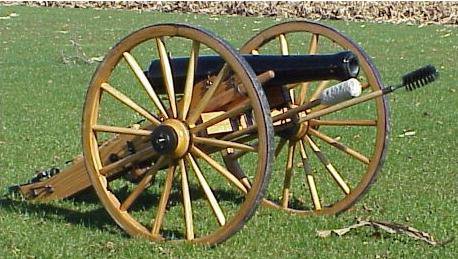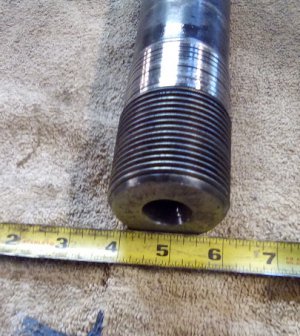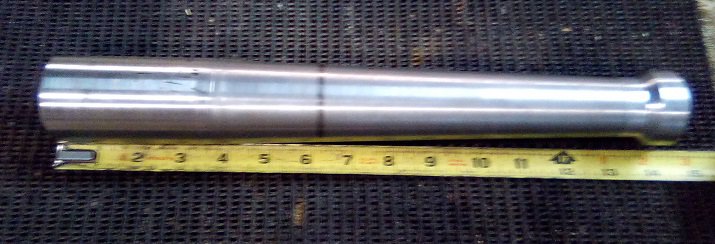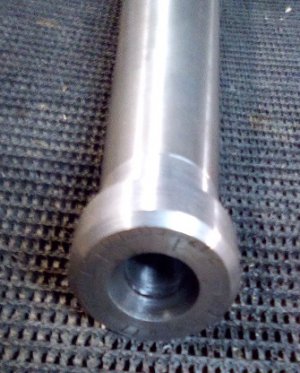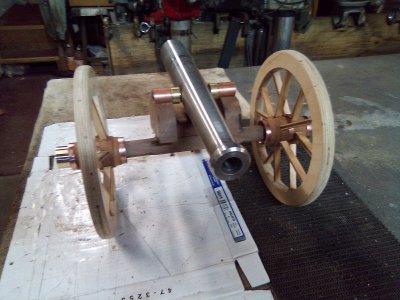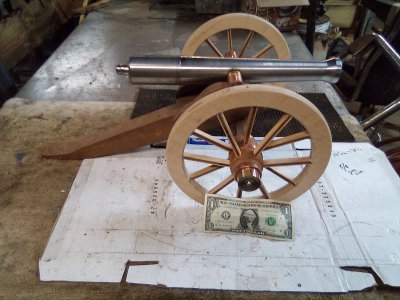- Joined
- Oct 5, 2019
- Messages
- 22
I have started a build on a replica 12 pound civil war cannon [my first] similar to the one in the enclosed picture. So far the statistics are ;
20 inch steel barrel , 5/8 ths smooth bore
Black Walnut woodwork, brass attachments
16 inch steel rim wheels [ dished if I can]
Used as a signal cannon [Black powder]
I have a set of basic free drawings from the internet and will post some pictures as soon as I have some that are worthy of posting. Going over my drawings and looking at pictures has brought up some questions. I see several chains on this plan . Some attached to smaller trunnion parts that I would think would keep them from getting lost. However, what was the chains under the cannon for? I am guessing to attach to anchor points to keep it in place when firing . The 5/8 ths bore was chose because it was the already in the steel blank that I am turning so just some internal polishing and that part is done. The plans I have show the barrel tapered at both ends. More so on the muzzle but its widest section is at the trunnions. After looking at pictures of napoleon cannons, I do not see any with a tapered breach. [which to me makes sense] it seems that the breach end would want to be the largest diameter. Any thoughts?
Also while turning the barrel I wondered , Why is the muzzle flared? Perhaps it had to do with the forging/casting process ? And what was the coil of rope on the tongue used for? I am sure other questions will come up as I the build goes on . Than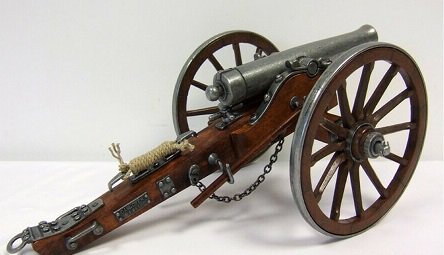 ks in advance for any input
ks in advance for any input
20 inch steel barrel , 5/8 ths smooth bore
Black Walnut woodwork, brass attachments
16 inch steel rim wheels [ dished if I can]
Used as a signal cannon [Black powder]
I have a set of basic free drawings from the internet and will post some pictures as soon as I have some that are worthy of posting. Going over my drawings and looking at pictures has brought up some questions. I see several chains on this plan . Some attached to smaller trunnion parts that I would think would keep them from getting lost. However, what was the chains under the cannon for? I am guessing to attach to anchor points to keep it in place when firing . The 5/8 ths bore was chose because it was the already in the steel blank that I am turning so just some internal polishing and that part is done. The plans I have show the barrel tapered at both ends. More so on the muzzle but its widest section is at the trunnions. After looking at pictures of napoleon cannons, I do not see any with a tapered breach. [which to me makes sense] it seems that the breach end would want to be the largest diameter. Any thoughts?
Also while turning the barrel I wondered , Why is the muzzle flared? Perhaps it had to do with the forging/casting process ? And what was the coil of rope on the tongue used for? I am sure other questions will come up as I the build goes on . Than
 ks in advance for any input
ks in advance for any input

